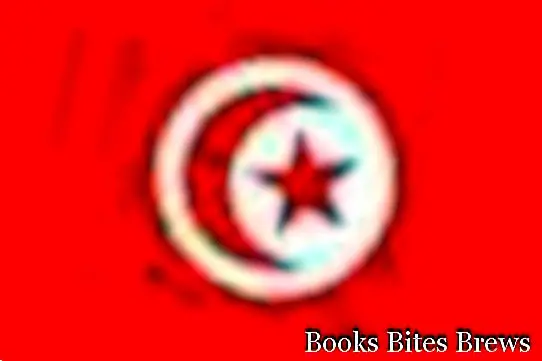General tourist information about Tunisia, including all the useful things to know before departure, for a trip or a holiday in this North African state.
Tunisia in short
- Capital: Tunis
- Area in sq km: 163,610
- Population: 10.175.014 (2006)
- Religion: Muslim, with minorities of Catholics and Jews
Where is it
Tunisia, located in northern Africa, borders Algeria to the west and Libya to the south east. To the north and east it is washed by the Mediterranean Sea.
The territory of Tunisia is very varied passing from the coastal plains to the desert area of the south through plateaus mixed with plains and mountain ranges.
The country despite having a limited extension has various geographic aspects ranging from a mountainous area in the north to a desert area in the south.
The north western part is made up of bundles of modest heights heading north-east, crossed by fertile valleys, including the Medjerda valley, the largest river in Tunisia.
To the east the reliefs slope down into a flat belt, interrupted by modest hills, which runs close to the Mediterranean coast to the Gulf of Gabès.
The northern reliefs are exhausted in the central part of the country with a band of depressions and salt basins called chotts (the largest is the chott Djerid), which constitutes the border line with the southern part, formed by the Sahara desert table and crossed in longitudinal direction from the modest heights of the Ksour.
Along the coast (rocky in the first stretch and then sandy), the Gulfs of Tunis, Hammamet and Gabès stand out, which encompasses the islands of Djerba and Kerkenna.
Hydrography
The Medjerda river that flows into its fertile valley, until it flows into the Mediterranean Sea north of Tunis, is the only permanent waterway in Tunisia.
Climate
The northern part of the country is characterized by a Mediterranean type climate with hot summers, mild winters and moderate rainfall.
Going southwards, the dryness gradually increases and the climate becomes warmer until it takes on distinctly desert characteristics.
Recommended readings- Hammamet: what to see in the city of baths
- Mahdia (Tunisia): what to see
- Tunisia: what to see absolutely
- Tunisia: useful information
- Djerba: what to see on the island of Tunisia
Population
Over the centuries the coasts of Tunisia, low and rich in coves, have constituted an easy landing place for Phoenicians, Romans, Vandals, Byzantines, Arabs, Ottomans and French who in different eras have dominated this country, originally inhabited by Berber tribes.
The current population is mainly made up of Arab-Berbers. There are always isolated groups of Berbers living in the south of the country.
Time zone
Tunisia has the same time as Italy, but there is no summer time, so in summer, compared to Italy, it has one hour less.
Spoken language
Tunisia's official language is Arabic. French is taught in schools and is widespread.
Economy
The agricultural, manufacturing, energy and services sectors emerge in the Tunisian economy. Significant, in the agricultural sector, the export of olive oil, thanks to the excellent production of olives, which together with cereals, tomatoes, lemons, grapes, fruit and dates are among the main agricultural products of this country.
Many food products need to be imported. From a mining point of view, there are important phosphate deposits as well as small reserves of natural gas and oil fields.
In the industrial sector there are phosphate processing plants, chemical plants, mechanical industries and above all textile and leather industries.
Tourism plays a fundamental role in the Tunisian economy.
When to go
For a holiday in Tunisia the months of July and August correspond to the hottest and most expensive period. Spring is a good season to visit this country.
Necessary documents
To enter Tunisia, a valid passport is required, while for those who are part of an organized group trip, the identity card valid for expatriation and the booking voucher are sufficient.
The visa is not necessary for stays of less than 3 months.
On board the plane or ship, a form with personal data and the reason for the trip is required, which is collected by the border police.
Phone
- The international prefix for telephoning from Italy to Tunisa is: 00216
- The international prefix for telephoning from Tunisia to Italy is: 0039
GSM mobile phones can be used.
Electricity
The electricity in Tunisia is 220 volts.
Money and credit card
Tunisia's official currency is the Tunisian dinar (TND). Payments with the main credit cards are normally accepted.
How to get
plane
In Tunisia, the main airport is in Tunis (TUN Carthage).
Other airports are located in Djerba (DJE Melita), Monastir (MIR Monastir Skanes), Sfax (SFA Sfax Thyna), Tabarka (TBJ Tabarka), Tozeur (TOE Tozeur).
Tunisair, the national airline of Tunisia, offers flights from Milan, Rome and Palermo to Tunis.
Alitalia connects Rome Fiumicino to Tunis.
Ferry
From Italy it is possible to reach Tunisia by ferry by bringing your own car or motorbike. The Italian driving license, the green card or, alternatively, a temporary insurance taken out at the border is sufficient.
Vaccinations
There are no mandatory vaccinations to go to Tunisia.
However, the Notifier and the hepatitis A vaccine are recommended.
In addition, it is recommended to drink only bottled water and drinks, without adding ice, to eat freshly cooked food, avoiding vegetables and raw food.




